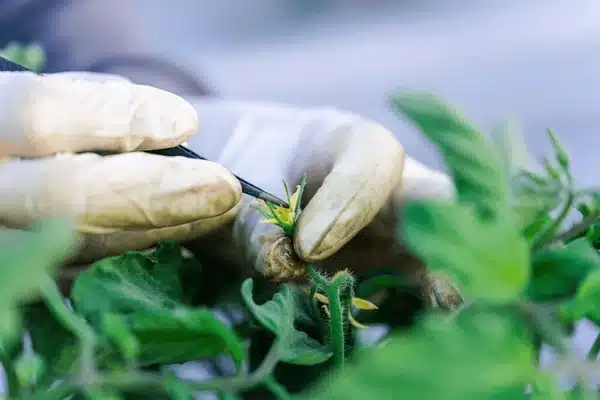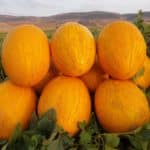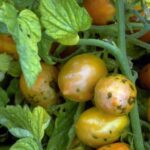Improving Horticultural Crop Yields Through Plant Selection

Plant selection is a critical step in plant breeding, where breeders identify and propagate plants with desirable traits to develop superior varieties. This process combines science, innovation, and traditional knowledge to meet the demands of modern agriculture. For crops like tomato, cucumber, watermelon, melon, peppers, and eggplant, plant selection has played a pivotal role in improving yield, quality, resistance to pests and diseases, and adaptability to different environments.
This article explores the methods, principles, and specific traits targeted in the plant selection process for these key crops.
Importance of Plant Selection in Breeding Horticultural Crops
Horticultural crops like tomato, cucumber, watermelon, melon, peppers, and eggplant are integral to global diets and economies. Selection in breeding these crops focuses on:
- Yield Improvement: Enhancing productivity to meet increasing food demands.
- Quality Traits: Improving taste, texture, shelf life, and nutritional value.
- Stress Resistance: Developing resistance to biotic stresses (pests, diseases) and abiotic stresses (drought, salinity).
- Market Preferences: Addressing consumer demands for specific colors, shapes, and sizes.
General Principles of Plant Selection in Horticultural Crops
1. Genetic Diversity
Effective plant selection depends on the availability of genetic variation within the crop population. Breeders use landraces, wild relatives, and advanced breeding lines as sources of genetic diversity.
2. Heritability of Traits
Traits with high heritability, such as fruit size or shape, are easier to improve through selection. Polygenic traits, like yield and stress resistance, require more sophisticated methods.
3. Selection Environment
Field conditions should simulate the target environment to ensure selected traits perform well under real-world conditions.
4. Breeding Objectives
Defining clear objectives—whether for disease resistance, yield, or quality—guides the selection process effectively.
Plant Selection Methods for Tomato, Cucumber, Watermelon, Melon, Peppers, and Eggplant
1. Mass Selection
- Overview: Selecting a group of plants with desirable traits, bulk harvesting their seeds, and using these seeds for the next generation.
- Application: Effective for self-pollinated crops like tomato and eggplant.
2. Pure-Line Selection
- Overview: Propagating individual plants with outstanding traits to develop genetically uniform lines.
- Application: Common in cucumber and peppers for producing consistent fruit quality.
3. Hybrid Selection
- Overview: Crossing two genetically distinct parents to produce offspring with hybrid vigor (heterosis).
- Application: Widely used in watermelon, melon, and tomato for yield and disease resistance.
4. Backcross Selection
- Overview: Repeatedly crossing a hybrid with one of its parents to incorporate specific traits, such as disease resistance.
- Application: Frequently employed in breeding disease-resistant eggplant and peppers.
5. Marker-Assisted Selection (MAS)
- Overview: Using molecular markers to identify plants with desired traits at the DNA level.
- Application: Accelerates breeding for traits like disease resistance in tomatoes and cucumbers.
6. Genomic Selection
- Overview: Predicting plant performance based on genome-wide marker data.
- Application: Ideal for improving complex traits like yield and stress tolerance in all six crops.
Key Traits Targeted in Plant Selection
Tomato (Solanum lycopersicum)
- Yield: Breeders select for higher fruit set and size.
- Disease Resistance: Resistance to bacterial wilt, late blight, and tomato mosaic virus is prioritized.
- Quality: Traits like lycopene content, sweetness, firmness, and shelf life are essential.
- Abiotic Stress Tolerance: Heat and drought tolerance are critical in regions with climate challenges.
Cucumber (Cucumis sativus)
- Parthenocarpy: Selection for parthenocarpic varieties (seedless fruit production).
- Disease Resistance: Resistance to powdery mildew, downy mildew, and cucumber mosaic virus is essential.
- Fruit Quality: Uniformity in size, shape, and color is a primary focus.
- Early Maturity: Early-maturing varieties are preferred for market advantage.
Watermelon (Citrullus lanatus)
- Seedless Varieties: Breeders focus on triploid hybrids to produce seedless fruits.
- Disease Resistance: Fusarium wilt and anthracnose resistance are critical targets.
- Fruit Quality: Sweetness, red flesh color, and crisp texture are key selection criteria.
- Heat Tolerance: Essential for cultivation in arid regions.
Melon (Cucumis melo)
- Aroma and Flavor: Breeders select for distinct aromatic and flavorful melons.
- Netting and Rind Strength: Important for durability and transportability.
- Disease Resistance: Focus on resistance to powdery mildew and downy mildew.
- Shelf Life: Long shelf life to reduce post-harvest losses.
Peppers (Capsicum spp.)
- Yield and Fruit Size: Selection for higher yield and uniform fruit size.
- Pungency: Tailoring capsaicin levels for sweet or hot peppers.
- Disease Resistance: Breeding for resistance to Phytophthora blight, powdery mildew, and bacterial spot.
- Abiotic Stress Tolerance: Salinity and drought tolerance are key breeding objectives.
Eggplant (Solanum melongena)
- Fruit Quality: Traits like firmness, glossy skin, and reduced bitterness are prioritized.
- Disease Resistance: Breeders target resistance to Verticillium wilt and bacterial wilt.
- Yield: High-yielding plants with consistent fruiting patterns are selected.
- Abiotic Stress Tolerance: Heat and drought resistance are critical in regions with extreme climates.
Challenges in Plant Selection for These Crops
1. Limited Genetic Diversity
Narrow genetic bases in some crops, like watermelon and melon, limit the potential for selection.
2. Complex Traits
Polygenic traits, such as yield and stress tolerance, are challenging to improve due to their multifactorial nature.
3. Environmental Variability
Unpredictable environmental factors can affect the expression of traits, complicating the selection process.
4. Consumer Preferences
Changing market demands necessitate frequent adjustments in breeding objectives.
Technological Advances in Plant Selection
1. CRISPR-Cas9 Gene Editing
- Enables precise modifications in the genome for targeted trait improvement.
- Example: Creating tomatoes with enhanced nutritional content.
2. High-Throughput Phenotyping
- Advanced imaging and sensor technologies allow rapid evaluation of traits in large populations.
- Example: Monitoring disease resistance in cucumbers and peppers.
3. Genomic Selection and AI
- Artificial intelligence integrates genomic data and phenotypic traits to optimize breeding programs.
4. Tissue Culture and Micropropagation
- Facilitates the rapid propagation of selected plants, especially in eggplant and peppers.
Success Stories in Plant Selection
1. Tomato
- The development of high-lycopene tomato varieties has improved nutritional value and marketability.
2. Cucumber
- Parthenocarpic cucumber varieties have revolutionized greenhouse cultivation.
3. Watermelon
- Triploid seedless watermelons dominate the global market due to consumer preference.
4. Melon
- Long-shelf-life melons have reduced post-harvest losses and expanded export markets.
5. Peppers
- Resistance to bacterial spot and Phytophthora blight has significantly increased pepper yields.
6. Eggplant
- Hybrid eggplants with improved yield and fruit quality are widely adopted in Asia.
Future Prospects
Plant selection in breeding horticultural crops will continue to leverage emerging technologies and sustainable practices. Key trends include:
- Climate-Resilient Crops: Developing varieties that thrive under extreme weather conditions.
- Precision Breeding: Integrating genomic tools for targeted trait improvement.
- Consumer-Centric Breeding: Customizing crops to meet specific market demands.
Conclusion
Plant selection in breeding tomato, cucumber, watermelon, melon, peppers, and eggplant is vital for enhancing productivity, quality, and resilience. By combining traditional methods with modern technologies, breeders can address the challenges of climate change, population growth, and market demands. Continued investment in research and innovation will ensure these essential crops remain sustainable and profitable for future generations.
Trust Seeds Always aims to improve new hybrids to match market needs, you can check all of it is varieties on their website www.trustseeds.com





